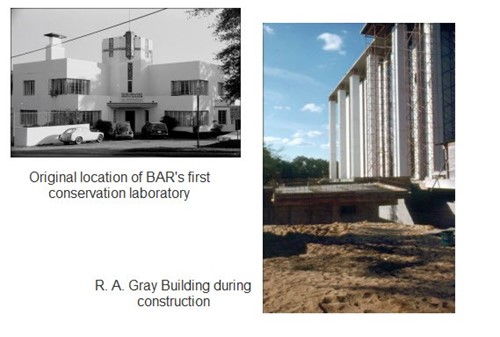Collections and Conservation
The Collections and Conservation Laboratory section of the Florida Bureau of Archaeological Research (BAR) is responsible for the preservation and curation of over 3.5 million objects, which have been recovered from state-owned or state-managed lands. Collections and conservation staff are responsible for acquiring, maintaining, preserving, interpreting, exhibiting and making available for study archaeological objects. These artifacts are acquired through state-sponsored research, permitted projects operating under Chapters 1A-31 and 1A-32, Florida Administrative Code, and by private donations made pursuant to Chapter 1A-40, Florida Administrative Code. For more information visit FLsenate.gov and FLRules.com.

History of Conservation and Collections
The Bureau of Archaeological Research is responsible for curating archaeological objects collected on state-owned and state-managed lands. The collection originated in 1965 with the appointment of Florida’s first State Archaeologist. In Tallahassee, Florida State University’s Gunter Building was the first home to the offices of the State Archaeologist. The State Archaeologist was responsible for overseeing salvage archaeological projects that were being conducted around the state. Historical artifacts recovered in these projects soon created a rapid increase in the volume of artifacts in the state’s collection, promoting the need to move to a more spacious facility. The site of the former Leon County Jail (now referred to as the Firestone Building), became the home of the Division’s first Conservation Laboratory. The R.A. Gray building located in downtown Tallahassee, broke ground in 1973 and was completed by 1976. It was to be the home of the offices of the Florida Department of State, under which was the Division of Archives, History and Records Management. The R.A. Gray Building would house not only the state’s archaeological collection and a state of the art Conservation Lab, but also the Museum of Florida History and the Florida Library and Archives. In the early 1990’s, with the ever-growing size of the collection, a comprehensive catalog and database of the collection was created to assist in its management. The resulting database continues to make Florida’s archaeological collections one of the most accessible of its kind in the nation. Through the end of the 20th and the beginning of the 21st century, Florida’s archaeological collection continued to grow. In 2012, the collection was relocated to the archaeology building on the site of the Division managed property, Mission San Luis. The collection’s move to Mission San Luis, allowed the state to create a collection space that could accommodate the collection’s continued growth for many years, while maintaining standards of security and accessibility.


